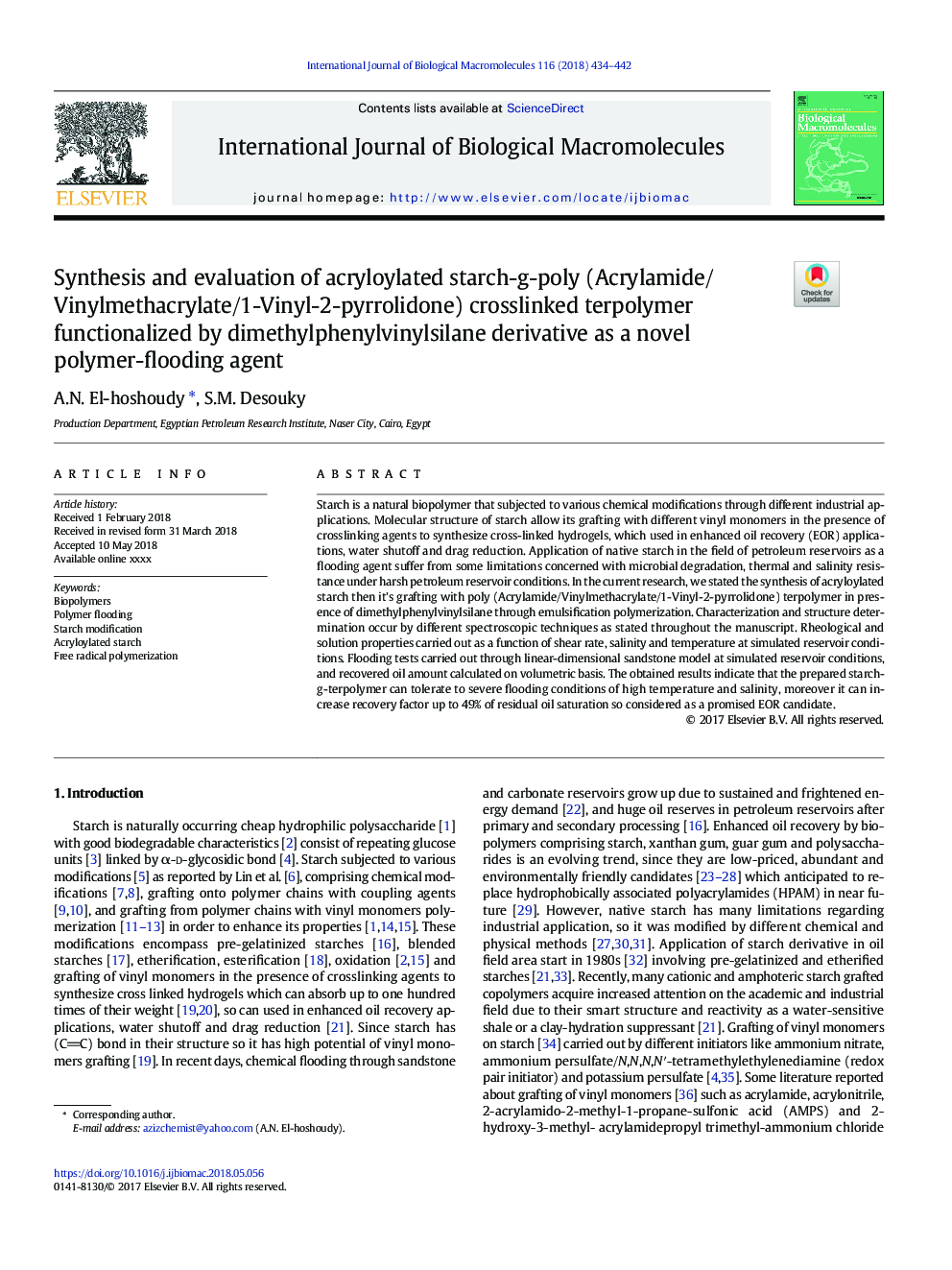| کد مقاله | کد نشریه | سال انتشار | مقاله انگلیسی | نسخه تمام متن |
|---|---|---|---|---|
| 8327122 | 1540198 | 2018 | 9 صفحه PDF | دانلود رایگان |
عنوان انگلیسی مقاله ISI
Synthesis and evaluation of acryloylated starch-g-poly (Acrylamide/Vinylmethacrylate/1-Vinyl-2-pyrrolidone) crosslinked terpolymer functionalized by dimethylphenylvinylsilane derivative as a novel polymer-flooding agent
دانلود مقاله + سفارش ترجمه
دانلود مقاله ISI انگلیسی
رایگان برای ایرانیان
کلمات کلیدی
موضوعات مرتبط
علوم زیستی و بیوفناوری
بیوشیمی، ژنتیک و زیست شناسی مولکولی
زیست شیمی
پیش نمایش صفحه اول مقاله

چکیده انگلیسی
Starch is a natural biopolymer that subjected to various chemical modifications through different industrial applications. Molecular structure of starch allow its grafting with different vinyl monomers in the presence of crosslinking agents to synthesize cross-linked hydrogels, which used in enhanced oil recovery (EOR) applications, water shutoff and drag reduction. Application of native starch in the field of petroleum reservoirs as a flooding agent suffer from some limitations concerned with microbial degradation, thermal and salinity resistance under harsh petroleum reservoir conditions. In the current research, we stated the synthesis of acryloylated starch then it's grafting with poly (Acrylamide/Vinylmethacrylate/1-Vinyl-2-pyrrolidone) terpolymer in presence of dimethylphenylvinylsilane through emulsification polymerization. Characterization and structure determination occur by different spectroscopic techniques as stated throughout the manuscript. Rheological and solution properties carried out as a function of shear rate, salinity and temperature at simulated reservoir conditions. Flooding tests carried out through linear-dimensional sandstone model at simulated reservoir conditions, and recovered oil amount calculated on volumetric basis. The obtained results indicate that the prepared starch-g-terpolymer can tolerate to severe flooding conditions of high temperature and salinity, moreover it can increase recovery factor up to 49% of residual oil saturation so considered as a promised EOR candidate.
ناشر
Database: Elsevier - ScienceDirect (ساینس دایرکت)
Journal: International Journal of Biological Macromolecules - Volume 116, September 2018, Pages 434-442
Journal: International Journal of Biological Macromolecules - Volume 116, September 2018, Pages 434-442
نویسندگان
A.N. El-hoshoudy, S.M. Desouky,